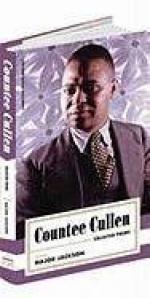|
This section contains 766 words (approx. 3 pages at 300 words per page) |

|
SOURCE: "The Black Protest Sonnet," in American Poetry, Vol. 2, No. 41, Fall, 1984, pp. 2-12.
In the following excerpt, Smith comments on Cullen's use of the sonnet as a vehicle for protest.
To more than one commentator on the poetry of the Harlem Renaissance, the central paradox of the movement, as a literary phenomenon, is the discrepancy between theory and practice: what the poets proposed in theory and what they actually accomplished in their poetry. This paradox appears in poets like Countee Cullen and Claude McKay, who considered themselves poets first and blacks second, yet their most memorable poetry draws its strength from racial identity. In matters of literary style, this paradox surfaces in the choices of conventional forms that were often at odds with radical literary themes. The most striking instance of this paradoxical relationship between theory and practice, style and content, is found in the use of the...
|
This section contains 766 words (approx. 3 pages at 300 words per page) |

|


